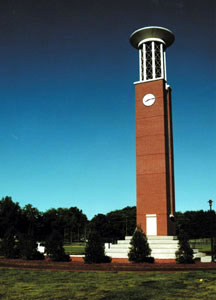
Lipscomb University
The roots of Lipscomb University date to October 5, 1891, when David Lipscomb and James A. Harding established the Nashville Bible School. Lipscomb and Harding believed there was a need for a school that would prepare students completely through high quality studies in general subjects as part of a Bible-centered curriculum. Lipscomb, who was editor of the Gospel Advocate, stated the school’s purpose: “to teach the Bible as the revealed will of God to man and as the only and sufficient rule of faith and practice, and to train those who attend in a pure Bible Christianity. . . . Such other branches of learning may be added as will aid in the understanding and teaching of the Scriptures and as will promote usefulness and good citizenship among men.” (1)
Nine boys enrolled for the first session. Today Lipscomb University includes the Campus School, which enrolls almost 1,600 in grades K-12, and over 2,500 students in bachelor’s and master’s degree programs. More than one hundred major programs of study are offered in twenty-two academic departments leading to bachelor’s degrees, with master’s degrees available in Bible and education. In keeping with the original purpose of the school, students attend Bible class and chapel daily.
The school moved to its first “owned” campus in 1893, when property was purchased near the city reservoir on South Spruce Street, about halfway between sites known then as Fort Negley and Fort Morton. By 1903 the school had outgrown these facilities. Lipscomb gave his farm to the school, where Lipscomb University stands today, between Nashville’s Lealand Lane and Belmont Boulevard.
For the school’s first ten years, Harding taught classes and served as superintendent. Twelve men have served as superintendent, or president, in sixteen administrations, including Harding and current president Stephen F. Flatt.
Lipscomb was chairman of the Board of Trustees and taught classes until age eighty-two. Four years later, in 1917, Lipscomb died. The school was renamed David Lipscomb College the following year in his honor.
The Lipscomb Expansion Program (LEP) began in 1944 to raise money and add facilities. A. C. Pullias was named director of the LEP, and Willard Collins was chosen as associate director. Pullias and Collins became president and vice-president, respectively, in 1946. Pullias set the school on course to graduate its first senior college class in 1948. Six years later, the Southern Association of Colleges and Schools accredited the school for the first time. Collins succeeded Pullias in 1977.
The Collins years marked a return to the vigor experienced in the LEP’s early years. A gymnasium and athletics complex were added for the high school, and a new women’s residence hall and the first major classroom building since the 1960s were built for the college. Enrollments reached record highs. Bible study remained as the core of the curriculum, and Lipscomb’s first graduate work in Bible studies was offered in 1983.
Harold Hazelip became president in 1986. Improvements made in the graduate program resulted in Level III accreditation of Lipscomb by the Southern Association. In February 1988, the board of directors voted to advance Lipscomb to university status. Two major buildings and a campus-wide fiber-optic network were constructed. Connections to the network are available in every dormitory room, faculty office, and classroom. Resources associated with the network make Lipscomb one of the most technologically advanced institutions, from middle school through university, in the South. In recent years, U.S. News and World Report and Peterson’s Competitive Colleges have honored Lipscomb for its quality and affordability.
Lipscomb University is committed to offering its students a twenty-first-century education as it retains its commitment to presenting that education within its unique philosophy of the highest quality academic subjects combined with daily Bible study. This combination has prepared young people well for successful living for more than a century.



